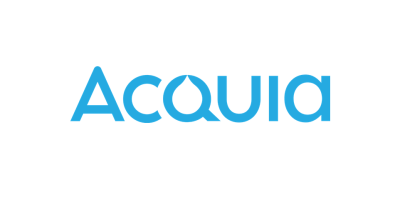The Ultimate Guide to File Management

Courtney Roe
Former Director of Content Strategy
Digital files are a fact of life for any modern business. In marketing, every product launch, event, and campaign is made possible through the creation and use of a myriad of digital files. Keeping it all organized can be an overwhelming challenge!
That’s where file management comes in. File management is the process of storing and organizing digital data so it’s easy to find and use. It ensures that information is stored safely, and creates efficiencies across workflows. Let’s learn more about the benefits of file management, and how to choose a system that’s right for your business needs.
What is a file management system?
A file management system is software used by organizations to securely organize and manage all of their digital data. Sometimes confused with cloud storage tools, file management platforms offer more robust functionality including permission settings to control who is able to access specific files, and can be used to create reports that capture file usage.
Not all file management systems are the same, however, so it’s important to research the features available on different platforms. Some of the features to look for include:
- Enhanced search (even across image-based PDF files)
- Electronic signature capability
- Ability to track changes (who made document edits, and when)
- Options for customization
- Easy import via scan or upload
- Security functionality
What can you store in a file management system?
File management systems are used to manage virtually any type of digital file you have in your organization — group or individual files, records, specific office documents, and more. This includes notes, reports, images, presentations, contracts, ads, enterprise documents, visual content, and even videos.
In fact, one of the most frequent questions about file management is how to store video. The answer largely depends on the type and format of your files...either high resolution (HD), a middle-range resolution (mezzanine format or proxy), or low resolution (video that’s been highly compressed and/or the quality isn’t great). The higher the quality, the larger the file size. And more data to store results in greater costs.
Why is file management important?
File management systems are important to businesses because they can create workflow efficiencies that increase productivity. And this translates to savings in terms of time and money.
A digital asset management (DAM) solution is one type of file management system that offers advanced functionality. Here are five reasons to consider a DAM solution for your file management needs:
- Automate manual tasks across workflows
A DAM solution stores brand assets in a central location that all team members can access on their own, any time. This eliminates bottlenecks and supports cross-team collaboration. DAM systems also offer tools to manage the review and approval process, which provides visibility into project schedules and automates manual tasks (like physically routing files between stakeholders).
- Protect and preserve your brand
DAM solutions empower teams to manage and protect their brand across the content lifecycle — with controls for release, expiration, and archiving. They have a strong governance structure with user groups that can be assigned specific access privileges. And DAM platforms also have tools to support rights management, including release documents, end-user license agreements, and visual watermarks.
- Encourage content reuse and repurposing
DAM systems offer a variety of ways for users to quickly find the assets they need, including search tools, saved searches, and curated collections. All of these features are powered by robust metadata that organize the content in the system. Further, DAM systems include tools to create file conversions on the fly. All of these features ensure that your stakeholders have the right content at their fingertips, eliminating the need (and associated cost) to recreate lost files. Additionally, analytics tools help identify the top-performing assets for reuse.
- Support brand consistency
Access to the most current, brand-approved assets and your brand guidelines allows your stakeholders to present a unified brand experience, and reduce the risk of publishing outdated or incorrect content. DAM systems also manage all versions of a file in an aggregated view that includes a history of any changes — all in one place.
- Integrate with other marketing technology (martech) tools
Many DAM solutions are able to integrate with other platforms to ensure the same content is being used across your martech stack. Further, embed codes and share links allow you to create once, publish everywhere (COPE) — or have any updates made to the master file in the DAM system be reflected everywhere that asset is published online.
In short, a DAM system is a content hub that allows you to contain, organize, and distribute all the files your teams need to create meaningful and consistent brand experiences, without delay.
How to choose a file management system
If you’re ready to invest in a new file management system or upgrade an existing platform, there is a lot to think about before you sign on the dotted line. Some questions include:
- What are your specific document management needs?
- What integration abilities does the system you’re interested in offer?
- Do the administrative control features offer what you need?
- How accommodating are the vendor’s support options?
Our DAM Evaluation Toolkit offers step-by-step exercises to help you answer these questions, and more. It provides a framework to guide you through your unique DAM evaluation process and identify the solution that fits your needs.
Organizations that want to create effective brand experiences need to have access to the right content, at the right time. The right software can help teams manage their ever-expanding sea of digital files, and achieve consistency across channels and touch points. Request, watch, or click through a demo to learn more about how our DAM system, Acquia DAM (Widen), can help.
Note: This article was originally published on Widen.com

